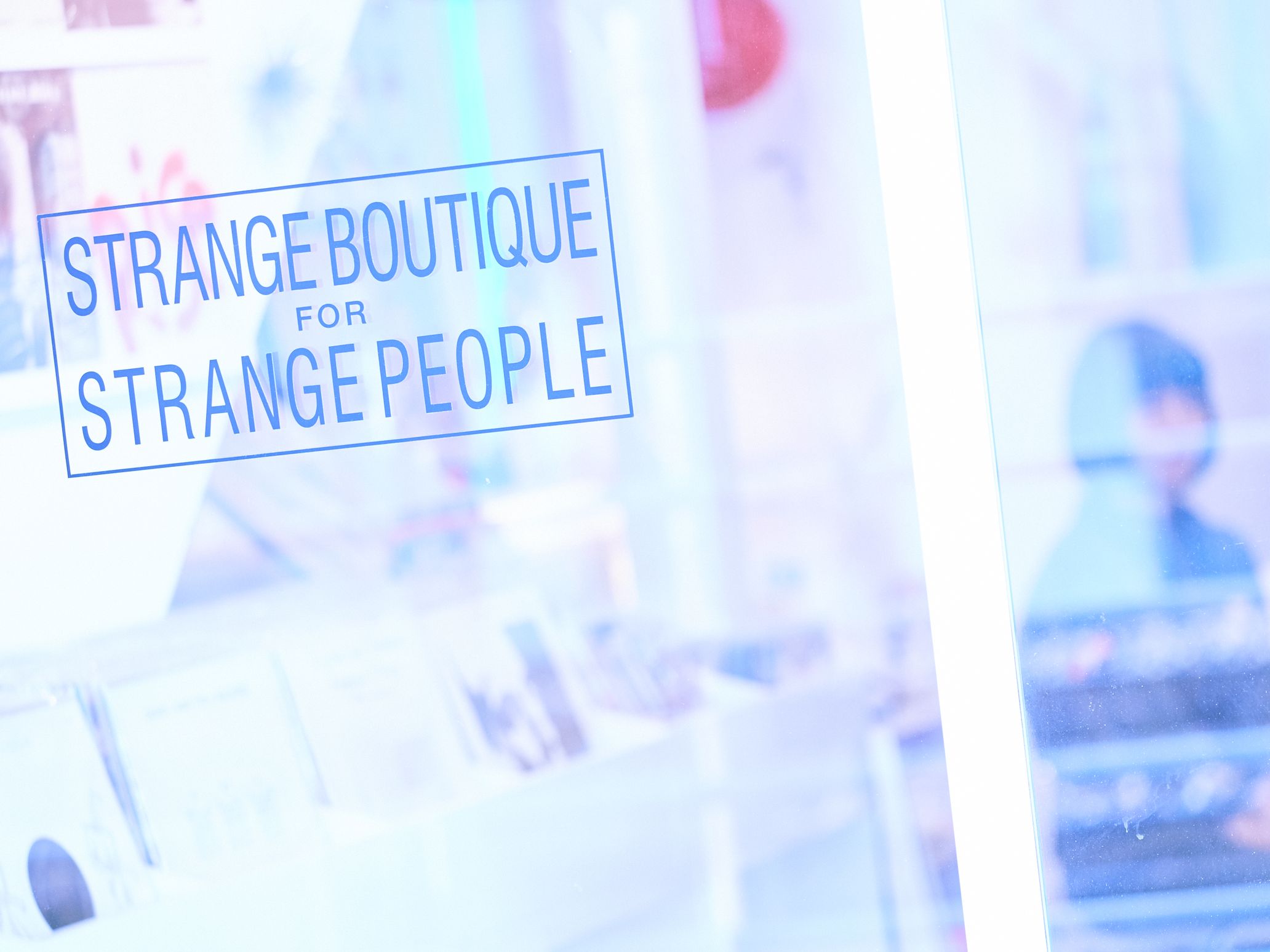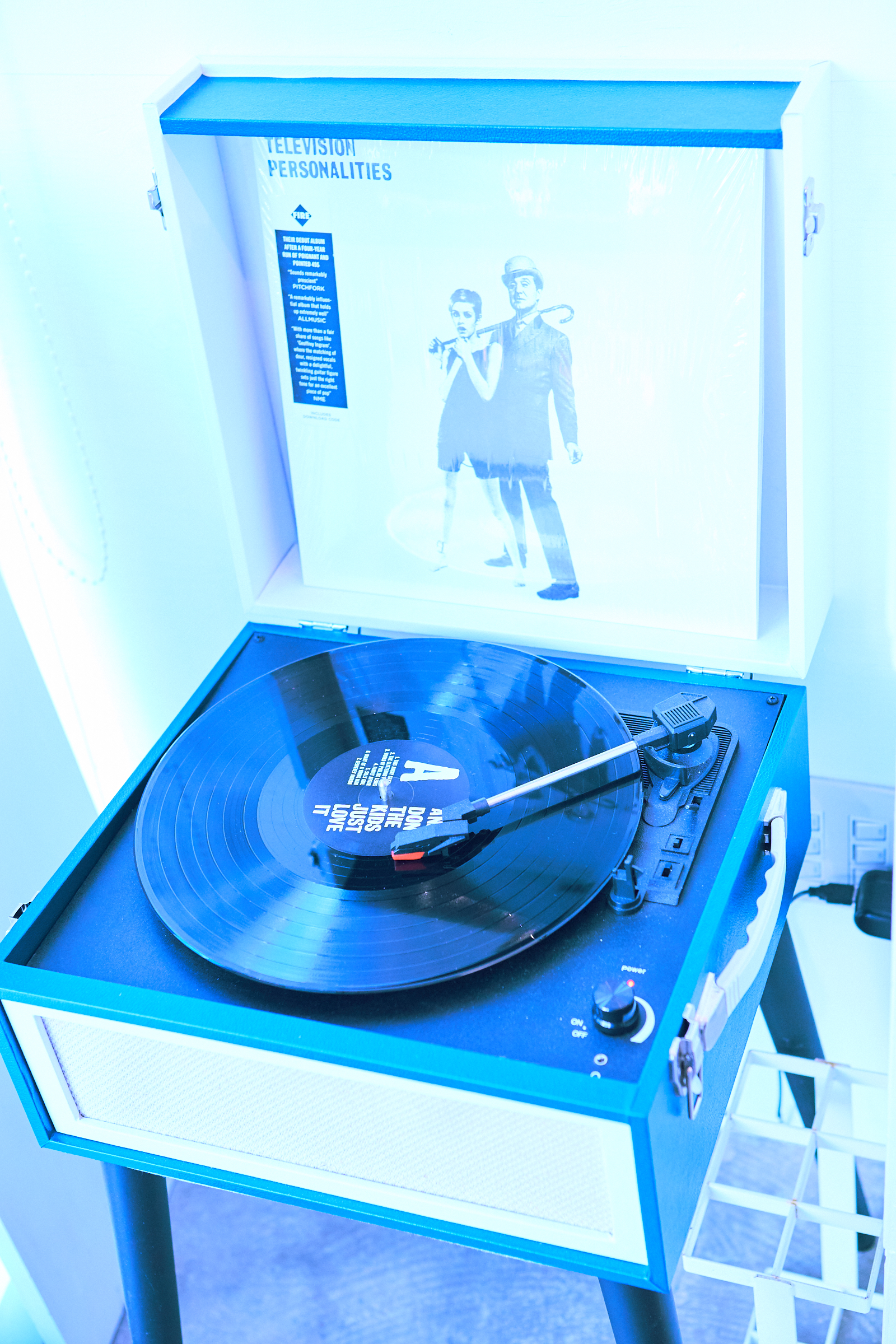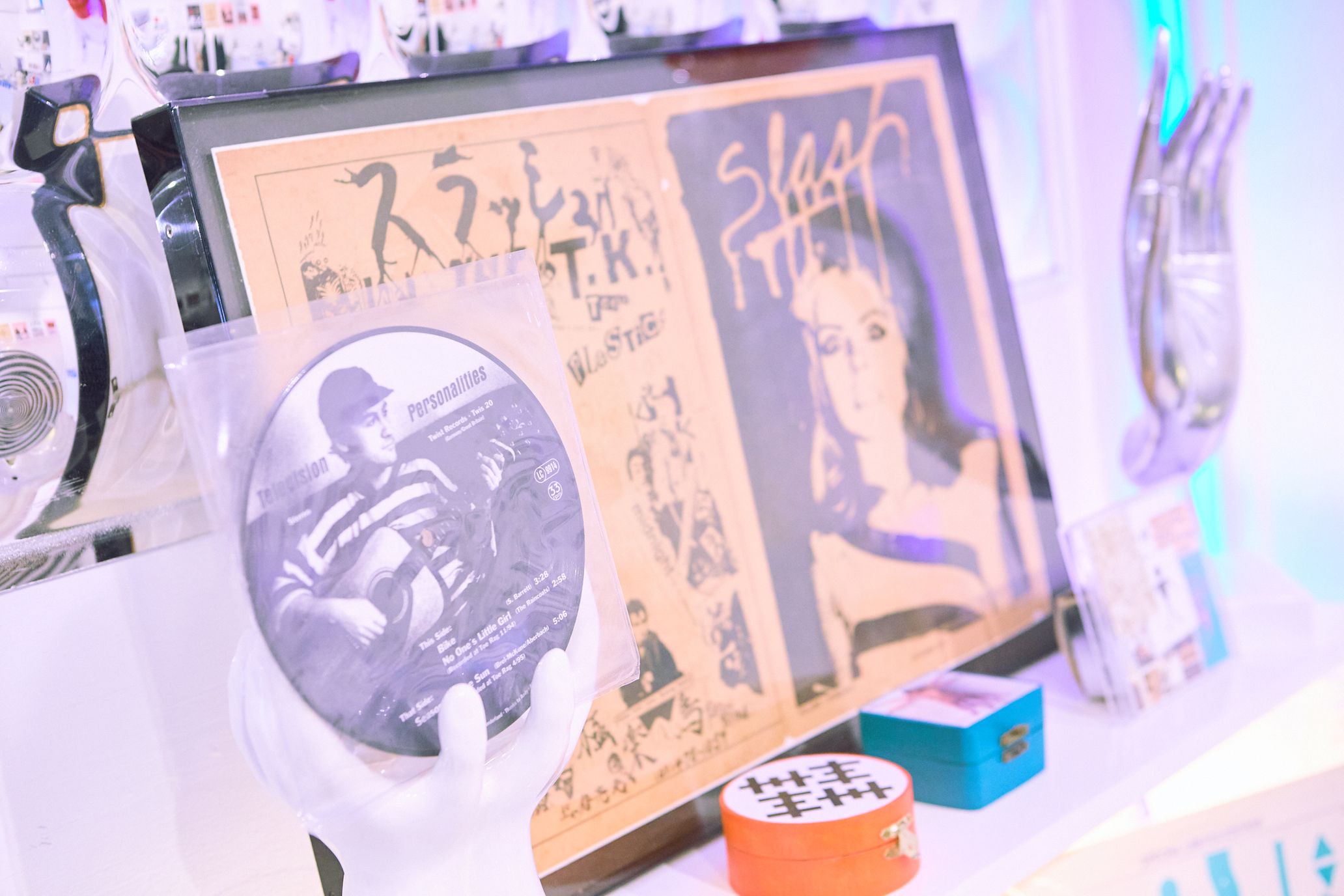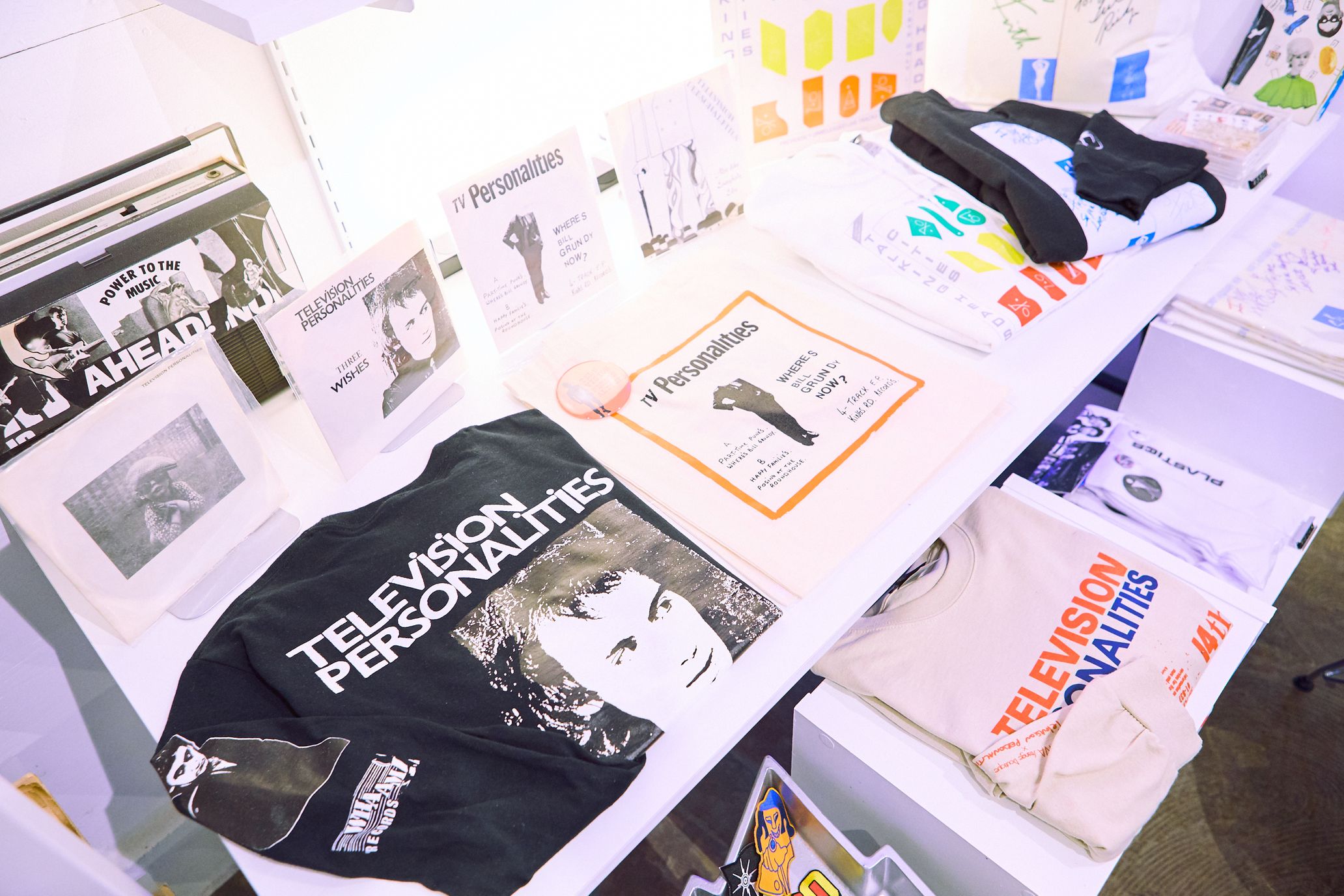The new wave movement embodied people’s desire to be free. VIVA Strange Boutique is a small shop in Okusawa, Tokyo, specializing in honoring artists by creating new merchandise. It seems like founder Minami Yamaguchi is trying to go beyond the city’s oversaturated business model and conventional ways of developing products. Her attitude towards what she does is nonchalant, but her work ethic is honest and abundant with love.
Revering artists and giving back to them
I’d like to explain the background of new wave, a movement that exploded in the late 70s to early 80s. It was short-lived, yet dazzling and dirty, and even had differences within the movement. The end of the 60s was marked by the Vietnam war, which brought about a dramatic shift of consciousness worldwide; one way it manifested was student-led protests against the war, like May 68. It can be said during this period, people were fed up with how modern society forcefully disciplined them via laws and oppression. They fought against it from all fronts and sought freedom.
Starting with Nordic countries, some regions lifted the ban against pornography; that’s the kind of era we’re talking about. People began to covet decadence, and its influence bled into art. It was no longer about austere art, beautiful landscape paintings, or abstract paintings, as art became unrestrained and unhinged. Not long after, avant-garde artists such as Cindy Sherman and photographers like Robert Mapplethorpe, whose photographs centered on themes of sexuality, came onto the scene. Horror novels and new wave started spreading around the same time. The Painted Word, written by Tom Wolfe and published in 1975, is a book that criticizes contemporary art, and one of the topics it touches on is the origins of new wave. Television Personalities—a band that expresses themselves in a frank manner among bands categorized as new wave or post-punk—gave their fourth album the same name as the book. The book is a testament to its time.
℗ Fire Records Released 2002
New wave represented liberation from limitations, with a DIY side. Besides making music, people ran labels, designed cover art, and made clothes. Rather than existing in an already-complete world, they carved the world out with their own hands. I described Television Personalities as frank because of their overall DIY spirit, not just their music style. The band recently collaborated with VIVA Strange Boutique and was highlighted by the shop. The following is Yamaguchi’s thoughts on the band:
“They’re a band that was active at the same time as the Sex Pistols. The roles of Vivienne Westwood and Malcolm McLaren had a huge influence on The Pistols. In contrast, Television Personalities were completely DIY. Also, Joy Division and New Order solidified their world thanks to Peter Saville’s art direction, and the label owner of Factory Records, Tony Wilson, contributed [to their success]. I think it’s a fantastic thing, and their relationship was beautiful. However, Television Personalities are quite special. Dan Treacy, the lead singer, started his label, put out their music through it, and made the cover art, too. I strongly admire how they’re a punk band with a DIY spirit in the truest sense of the word.”
The biggest value of the products, with shirts being the main category, VIVA sells, is that they’re all official. While there are original band shirts sold at high prices out there, there are endless bootleg shirts, too. If anything, shirts with iconic album covers have entirely taken on a life of their own. Such shirts are widespread and are tolerated by people, but Yamaguchi says she “really made sure they were official.”
Below is a quote from Chiguhaguna Karada—Fasshon Tte Nani? Written by Japanese philosopher Kiyokazu Washida, published in 1995 by Chikuma Shobo:
“When people think of fashion, they first think about dressing up. But in fact, fashion measures one’s distance between values and norms that make up society [and oneself]. By extension, I think it measures the distance between [fashion] and oneself.”
If you can measure the distance between values and norms and yourself through fashion, regardless of whether it’s close or far, you can wear a band shirt of your liking or imitate the style of someone from the band you like. Meaning: it’s the manifestation of your interests and feelings as a fan. But Yamaguchi’s goal isn’t that per se. Sure, it might be one of her goals, but an immense love that goes beyond that gives her the drive to do what she does.
Whenever she wants to collaborate with new wave or post-punk artists/bands, she first knocks on their door, so to speak. At times, Yamaguchi initiates contact via social media. She’s especially careful when she reaches out because she doesn’t want the other party to be suspicious. Instead of asking if she can make an official band shirt with nothing planned out, she makes an offer after establishing monetary conditions and designs to a certain degree. By expressing her situation and position clearly, asking the artist’s wants, and reflecting said wants onto the design, she creates something new that the artist would like as well. Yamaguchi comes up with new products bi-monthly, but she says she’s still way behind:
“What I make differs from what you would call a fashion brand, so I can’t separate it into seasons. I don’t know what the correct pace is. But I hope I can be more flexible when I feel like making something. The post-punk/new wave artists I want to collaborate with are on the older side, so I want to show them [the complete product] while they’re healthy and make them happy. When I think about that, it makes me feel like I need to be faster. I like music much more than fashion, and I want to work in a way that allows me to give back to artists. I could create bootleg products, but then I won’t be able to give back. The most important thing is to create things in a manner that suits them.”
“To give back.” These words, uttered by Yamaguchi several times during her interview, are the real purpose behind her running VIVA and producing products.
The subtle brilliance of creating only gender-neutral clothes
Yamaguchi’s interest in music sparked in her early teenage years. She experienced Sonic Youth in real-time and then dug through the bands that influenced Thurston Moore. By the time she was in high school, she was covering the guitar in the Velvet Underground’s songs. When I ask her why she didn’t start by covering Sonic Youth’s music, which was her entryway into this type of music, she responds: “Of course I like them, but I’m not sure why myself. Maybe it sounded too alternative rock? The Velvet Underground were much darker, so I think they matched my preference more.”
SHE TALKS SILENCE is Yamaguchi’s solo music project. Perhaps people get the impression that her character, coupled with her whispery voice, is on the feminine side. However, I believe there are darkness and hardness to Yamaguchi’s music. It’s similar to Nico after she left the Velvet Underground and went more goth. I especially paid close attention to SHE TALKS SILENCE’s “There’s No,” off her album, Sorry, I Am Not. It’s as though there’s a whisper lurking in the noise; it’s reminiscent of the hardcore band, Struggle For Pride’s stoic song structure. I tell her this, and she laughs without objection.
It’s hard for me to evaluate the Velvet Underground, as they were born in the 60s, and I was born in 1985, way after their inception. There’s one thing I’d like to say, even though I’m hesitant because I might say the wrong thing. Despite it being a tactic by Andy Warhol that Lou Reed disliked, the Velvet Underground once had Lou and Nico, two different genders, in the band. And this played a big role. Since the Velvet Underground, the gender binary began to blur. Some men were more feminine, and some women were more masculine. One clear example, from new wave, and post-the Velvet Underground, is Cosey Fanni Tutti from Throbbing Gristle, who had effortless sex appeal.
Regarding fashion, the founder of Throbbing Gristle and Psychic TV, Genesis P-Orridge, influences Yamaguchi the most. The story of Genesis and h/er second wife, Lady Jaye, creating a third identity by modifying their bodies to look like one another is well-known. For the new wave movement, the gender binary was unnecessary.
Yamaguchi says, “I won’t reject it, but I’ve never been interested in girly things.”
Yamaguchi is the artistic director of all the merchandise made by VIVA. But she doesn’t produce products only for women. Almost all the items are gender-neutral, and this should be worthy of mentioning. Is it intentional?
“When I make the products, I think about the featured artist and the type of person the band loves. I think about whether fans and I can be content [with the final result]. I’m a woman in my 30s, but I don’t think that matters so much. Because the bands I collaborate with play music that attracts a largely male audience, and the target demographic is men in their 50s, people often think VIVA is run by a middle-aged man (laughs). But that’s alright with me. I hope to create items by interpreting that old man vibe in my own way. Something that could be appreciated by a wide range of backgrounds, regardless of gender or age.”
What’s more, VIVA’s products cross over national borders:
“70% of VIVA’s products are purchased by people in Japan, while the rest is bought by people overseas. More and more customers are starting to find out about the store through social media. The artists [I’ve collaborated with] are kind enough to post about the product because it’s official, and I communicate with the artists myself. Fans then react to that. They usually like CAN or Chris & Cosey; their taste is similar to mine, more or less. Many fans end up becoming a patron, which makes me so happy. But I wondered if it was right for me to continue making the items during the pandemic. Shirts and clothes, especially the kind I make, are so nonessential. But a customer from overseas told me, ‘I got excited for the first time in a long time because this [product] was released.” When I felt like I was of service to someone on an emotional level, I was genuinely glad I continued doing my work properly.”
Even if you want to drop by to say hello, Okusawa, Tokyo, where VIVA is located, is in the middle of nowhere. Everywhere you walk, there are houses upon houses, and there are just a handful of stores. There are people around there, but most of them are either on their way to the station or home. It’s not like it’s outside the city center, but it feels like there’s a grayness to Okusawa. On top of the entrance is a small neon sign that says VIVA. The shop doesn’t try to attract attention to itself; its light shines quietly.
“This city has no color, and I chose this location because I liked that. Okusawa is a place that has no feeling of culture.”
Once the vibe of a city, whether it’s Shibuya, Shimokitazawa, or Nakameguro, is established, people go there with expectations. But with VIVA, it’s safe to say customers go to the shop directly. Their only purpose in Okusawa is to go to VIVA. It’s a small business built on Yamaguchi’s intent towards artists and the customers’ passion for music. Can it get any better than that?
VIVA Strange Boutique
Opened in the spring of 2019, VIVA Strange Boutique is a one-minute walk from Okusawa station in Setagaya ward. They mainly sell official new wave and post-punk genre shirts and other items like records and vintage magazines. The basement floor has a gallery space, and VIVA holds events and exhibitions of cutting-edge artists from time to time.
Photography by Kazuo Yoshida








